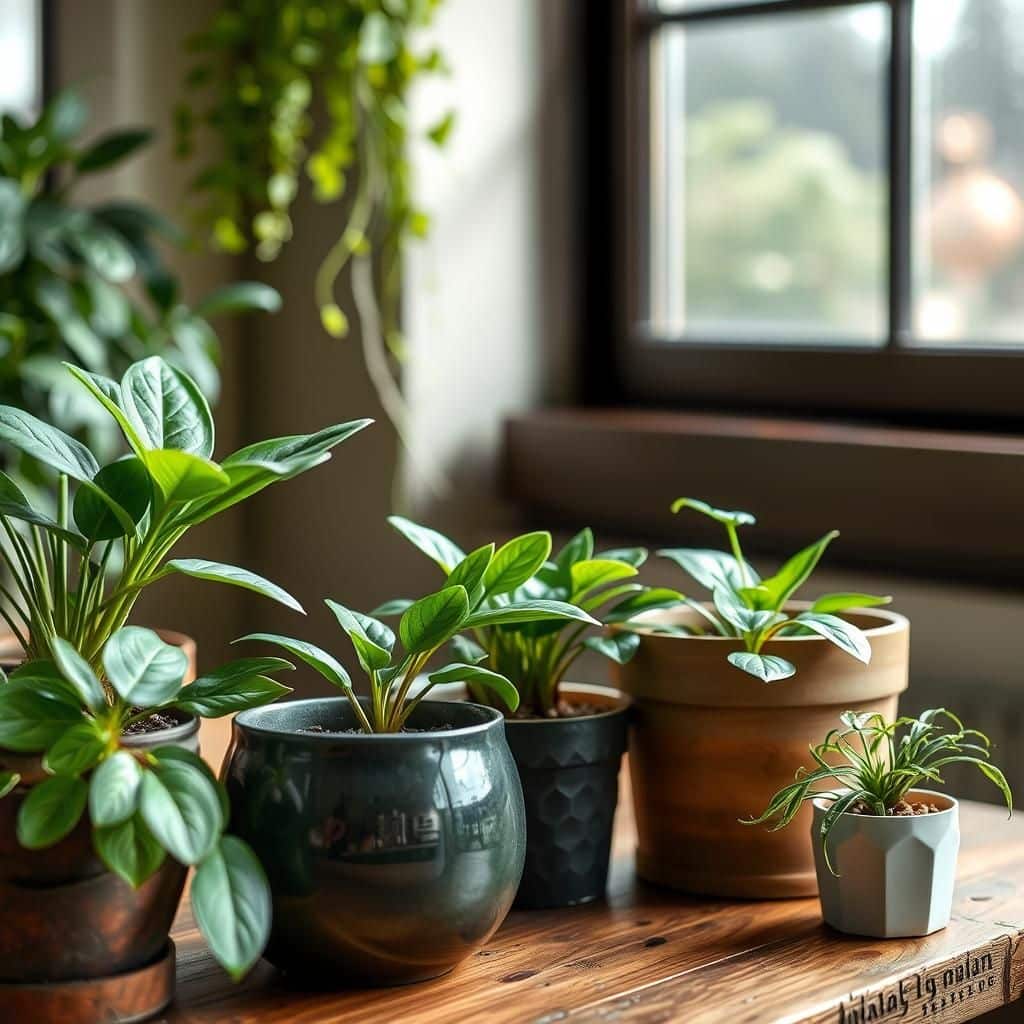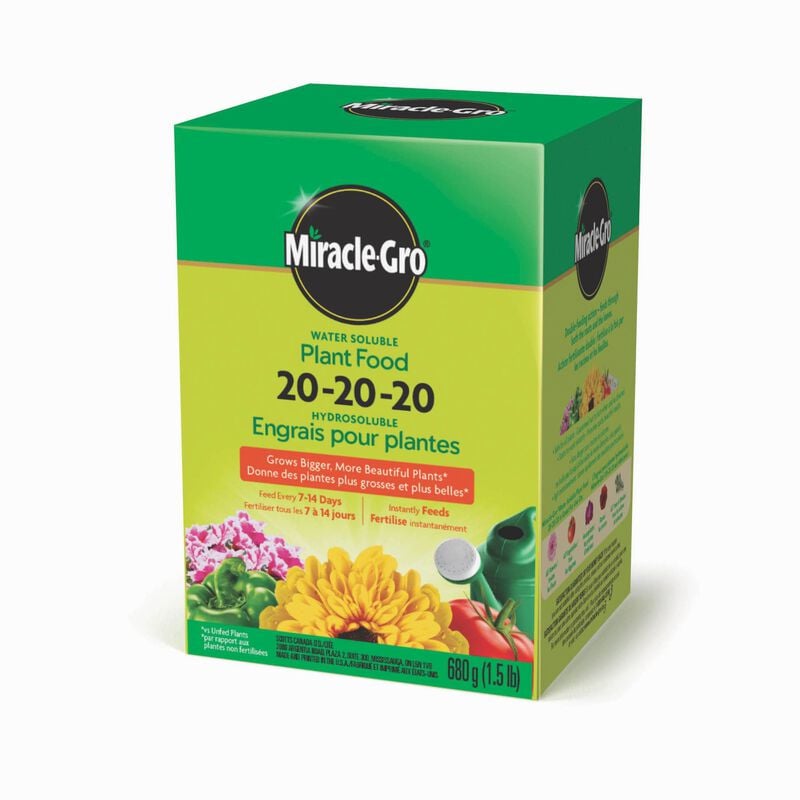The Ultimate Guide to the Best Fertilizer for Houseplants: Boost Your Indoor Garden's Growth!

Welcome to your comprehensive resource for enhancing the growth of your indoor garden! In The Ultimate Guide to the Best Fertilizer for Houseplants, we delve into the crucial role that fertilizer plays in nurturing vibrant, healthy plants. Whether you're a seasoned plant enthusiast or a beginner just starting your indoor sanctuary, selecting the right fertilizer is key to thriving houseplants. This guide will explore various types of fertilizers, their benefits, and how to choose the best option based on your plants' specific needs. Get ready to elevate your indoor gardening experience and watch your plants flourish like never before!
Choosing the Best Fertilizer for Houseplants
When selecting the best fertilizer for houseplants, it's essential to consider the specific needs of each plant type and the nutrients they require for optimal growth. Many houseplants thrive with a balanced formula, typically featuring a ratio of nitrogen, phosphorus, and potassium (N-P-K). Liquid fertilizers are often favored for their quick absorption, while slow-release granules provide long-lasting nourishment. Additionally, organic options like worm castings or fish emulsion can enhance the soil's microbiome, offering more natural nutrients. Tailoring your choice based on seasons, plant types, and growth stages ensures healthy foliage and vibrant blooms throughout the year.
Understanding N-P-K Ratios
The N-P-K ratio on fertilizer packaging indicates the relative amounts of nitrogen (N), phosphorus (P), and potassium (K) that the fertilizer contains. Nitrogen promotes leafy growth and is vital during the growing season, particularly for foliage plants. Phosphorus is key for root development and flowering, making it essential during blooming phases. Potassium contributes to overall plant health, enhancing resistance to diseases and environmental stress. Understanding these ratios enables plant owners to select a fertilizer that best meets the specific growth needs of their houseplants.
Types of Fertilizers for Houseplants
There are primarily two types of fertilizers—liquid and granular. Liquid fertilizers provide instantaneous nutrient delivery, making them ideal for plants that require frequent feeding. They are generally diluted in water before application. On the other hand, granular fertilizers, including slow-release options, feed plants over an extended period, reducing the frequency of application. Both types can be effective, but the choice often depends on personal preference, the specific plant's requirements, and the growing conditions indoors.
Organic vs. Synthetic Fertilizers
When choosing fertilizers for houseplants, one faces a choice between organic and synthetic options. Organic fertilizers are derived from natural sources, such as compost, bone meal, or fish emulsion, and they enrich the soil's structure and microbial activity. They release nutrients slowly and are less likely to burn plants. Synthetic fertilizers, on the other hand, are chemically manufactured and can offer precise nutrient ratios for rapid growth. While they can be effective in promoting growth, they may lead to soil depletion over time and require careful application to prevent plant damage.
Frequency of Fertilizing Houseplants
The frequency with which houseplants should be fertilized depends on several factors including the type of plant, the growth stage, and the time of year. Generally, during the active growing season (spring and summer), most houseplants benefit from fertilizing every 4 to 6 weeks. In contrast, during the dormant season (fall and winter), many plants require little to no fertilization. Always monitor the plant's condition and adjust the fertilization schedule accordingly to prevent over-fertilization, which can lead to nutrient buildup and damage.
Signs of Nutrient Deficiency
Recognizing the signs of nutrient deficiency in houseplants is crucial for maintaining health and vigor. Common indicators include yellowing leaves, stunted growth, or poor flowering. Nitrogen deficiency often leads to overall pale foliage, while phosphorus deficiency can cause darkening at the leaf edges and hinder bloom formation. Potassium deficiency typically presents as browning leaf tips. Understanding these symptoms can help you determine the best fertilizer to address specific deficiencies and promote robust plant health.
| Nutrient | Function | Deficiency Symptoms |
|---|---|---|
| Nitrogen | Promotes leafy growth | Yellow leaves, stunted growth |
| Phosphorus | Supports root development and flowering | Dark leaf edges, reduced blooms |
| Potassium | Improves disease resistance and overall health | Browning leaf tips, weak stems |
What is the best fertilizer for all indoor plants?
:strip_icc()/bhg-tier-3-primary-best-fertilizer-indoor-plants-ebrockob-001-91872346dcb1442290da582d33119240.jpeg)
The best fertilizer for all indoor plants typically includes a balanced nutrient formulation that provides essential macro and microelements. A popular choice is a liquid fertilizer with an N-P-K ratio of 20-20-20, which means it contains equal parts of nitrogen, phosphorus, and potassium. This ratio is effective for promoting overall growth and health in various indoor plants. Additionally, using a slow-release fertilizer can provide a steady supply of nutrients over time, reducing the frequency of application.
Understanding Plant Nutritional Needs
Indoor plants require different nutrients to thrive. Understanding these needs is crucial for selecting the right fertilizer.
- Nitrogen: Essential for leaf growth and overall development.
- Phosphorus: Important for root development and flower formation.
- Potassium: Vital for overall plant health and disease resistance.
Types of Fertilizers for Indoor Plants
There are various types of fertilizers suitable for indoor plants, each with unique benefits and applications.
- Liquid Fertilizers: Easily absorbed and ideal for quick nutrient delivery.
- Granular Fertilizers: Slow-release options that work over a longer period.
- Organic Fertilizers: Derived from natural sources; they improve soil health and promote beneficial microbial activity.
Best Practices for Fertilizing Indoor Plants
Applying fertilizer correctly is key to ensuring indoor plants receive the nutrients they need without risking over-fertilization.
See also:
- Frequency: Fertilize during the growing season (spring and summer) every 4-6 weeks.
- Dilution: Always dilute liquid fertilizers according to package instructions to avoid root burn.
- Observation: Monitor plant response after fertilization to adjust the frequency and amount if needed.
Common Mistakes to Avoid
Being aware of common fertilizing mistakes can help ensure healthier indoor plants.
- Over-fertilization: Using too much fertilizer can harm plants and cause salt buildup in the soil.
- Ignoring Soil Quality: Fertilizers should complement good soil; poor soil cannot retain nutrients effectively.
- Feeding Dormant Plants: Avoid fertilizing when plants are not actively growing, as they do not utilize nutrients effectively.
Choosing the Right Fertilizer Brand
Not all fertilizers are created equal. Picking a reputable brand can make a significant difference in plant health.
- Research Brands: Look for reviews and recommendations from other indoor gardeners.
- Specific Formulations: Some brands offer specific formulations tailored for different types of indoor plants.
- Price vs. Quality: Balance cost with quality; sometimes, higher-priced fertilizers offer better results.
Is 10-10-10 fertilizer good for house plants?
:max_bytes(150000):strip_icc()/SPR-guide-to-fertilizing-strawberries-7488291-03-d74ed1910c3645ecb407411f03122774.jpg)
Understanding 10-10-10 Fertilizer
10-10-10 fertilizer is a balanced fertilizer that contains equal parts of the three main nutrients essential for plant growth: nitrogen (N), phosphorus (P), and potassium (K). The numbers represent the percentage of each nutrient in the fertilizer, making it a popular choice for many gardening enthusiasts. It's particularly advantageous for houseplants because it provides a comprehensive nutrient profile to support overall plant health.
- Nitrogen promotes lush, green foliage.
- Phosphorus supports root development and flowering.
- Potassium enhances overall plant health and disease resistance.
Benefits of 10-10-10 Fertilizer for House Plants
Using 10-10-10 fertilizer for house plants offers several benefits. Firstly, its balanced nutrient ratio means it can support multiple aspects of plant growth without the risk of over-fertilizing any one element. This balance makes it suitable for a variety of indoor plants, allowing them to thrive equally.
- Encourages healthy growth across different plant types.
- Helps maintain vibrant foliage and blooms.
- Provides essential nutrients for new plantings and established plants alike.
How to Apply 10-10-10 Fertilizer
Applying 10-10-10 fertilizer correctly is crucial for maximizing its effectiveness. It’s essential to follow the manufacturer's instructions regarding the amount and frequency of application, as different plants have varying nutrient requirements. Over-fertilization can lead to nutrient burn, negatively affecting plant health.
- Mix the fertilizer with water for better absorption.
- Apply it during the growing season, typically spring and summer.
- Monitor your plants for signs of deficiency or excess after application.
Considerations for Specific House Plants
While 10-10-10 fertilizer is generally effective, some house plants have unique nutritional needs. It's important to research your specific plants to determine if they might benefit from a more tailored approach, as certain species prefer different nutrient ratios.
- Flowering plants may require higher phosphorus levels.
- Foliage plants might thrive with a formula richer in nitrogen.
- Succulents and cacti often need less frequent fertilization.
Signs Your House Plants Need Fertilizer
Recognizing the signs that your house plants need fertilizer is crucial for their continued health. Common indicators include yellowing leaves, stunted growth, or a lack of flowering. If observed, it may be time to apply 10-10-10 fertilizer to help restore vitality.
- Leaves appear yellow or pale.
- Growth is noticeably slow or stagnant.
- Flowers are smaller or absent despite appropriate conditions.
Is Miracle-Gro good for indoor plants?
.jpg)
Miracle-Gro is a popular fertilizer brand that many indoor gardeners consider for their plants. It offers a variety of formulations catering to different plant needs, but the question of whether it is suitable for indoor plants depends on specific factors, including the type of plants you have, their growth stages, and your overall watering regimen.
Effectiveness of Miracle-Gro for Indoor Plants
Miracle-Gro is designed to promote rapid growth and is enriched with essential nutrients such as nitrogen, phosphorus, and potassium. It is particularly effective for foliage plants and can lead to lush, green growth. However, its high nutrient concentration may not be ideal for all indoor plants, particularly sensitive species or those that thrive in low-nutrient environments.
- Miracle-Gro can enhance the growth rate of many common indoor plants.
- It is especially useful for vegetables and flowering plants indoors.
- Some plants may not require such concentrated nutrients, leading to potential over-fertilization.
Recommended Usage Guidelines
When using Miracle-Gro for indoor plants, it's crucial to follow application guidelines carefully. Over-fertilizing can lead to nutrient burn, which damages plants. It's generally recommended to dilute the fertilizer and to apply it less frequently, particularly during the dormant seasons.
See also:
- Use half the recommended concentration for sensitive indoor plants.
- Water the plants thoroughly before and after applying the fertilizer.
- Avoid fertilizing during the dormant months, typically in winter.
Types of Indoor Plants Suitable for Miracle-Gro
Miracle-Gro is suitable for a variety of indoor plants, including those that thrive on higher nutrient levels. Flowering plants and herbs often respond well to Miracle-Gro due to their nutrient needs during growth.
- Foliage plants like pothos and peace lilies benefit from added nitrogen.
- Herbs such as basil and rosemary require balanced nutrients for healthy growth.
- Flowering plants like African violets can thrive with the appropriate use of Miracle-Gro.
Potential Risks of Using Miracle-Gro
While Miracle-Gro can be beneficial, it comes with potential risks. Excessive use can lead to over-fertilization, which may result in root burn or even plant death. Additionally, some indoor plants may react negatively to the high salt content found in many Miracle-Gro products.
- Over-fertilization can lead to nutrient burn and damage the roots.
- Sensitive species may require alternative fertilizers or lower concentrations.
- Monitoring plant health is essential after applications to catch issues early.
Alternatives to Miracle-Gro for Indoor Plants
For indoor plant enthusiasts who prefer to avoid Miracle-Gro, there are several alternatives. Organic fertilizers, homemade compost, or specific blends catered to particular plant types can provide more controlled nutrient delivery.
- Organic options like fish emulsion and seaweed extract offer balanced nutrients.
- Compost can enhance soil health without the risk of over-fertilization.
- Slow-release fertilizers provide nutrients gradually, reducing the risk of damage.
What is 20 20 20 fertilizer for indoor plants?

20-20-20 fertilizer is a type of balanced fertilizer that contains equal parts of the three major nutrients essential for plant growth: nitrogen (N), phosphorus (P), and potassium (K). This fertilizer formulation is especially popular among indoor plant enthusiasts because it promotes healthy growth in a variety of plant types, including flowering and foliage plants. The numbers in the 20-20-20 designation represent the percentage by weight of each nutrient in the formulation, making it a versatile option for ensuring that plants receive balanced nutrition. When used correctly, this liquid or granular fertilizer can significantly enhance plant vitality and productivity.
What Are the Benefits of Using 20-20-20 Fertilizer?
Using 20-20-20 fertilizer offers several benefits for indoor plants:
- Balanced Nutrition: Provides equal amounts of essential nutrients, supporting all aspects of growth.
- Promotes Flowering: The balanced phosphorus content supports blooming plants to produce flowers.
- Enhances Growth Rate: Regular use can lead to quicker development of leaves and roots, promoting overall plant health.
How to Apply 20-20-20 Fertilizer?
Applying 20-20-20 fertilizer properly is crucial for the health of indoor plants.
- Dilution: Typically, this fertilizer is diluted with water according to the instructions provided, which usually suggest mixing 1 teaspoon of fertilizer in a gallon of water.
- Frequency: It is recommended to apply this fertilizer every 4 to 6 weeks during the growing season, adjusting based on plant response.
- Application Method: Water the plants thoroughly with the diluted solution to ensure that the nutrients reach the root zone effectively.
When to Use 20-20-20 Fertilizer?
Timing the use of 20-20-20 fertilizer is important for maximizing its effectiveness.
- Growing Season: The best time to use this fertilizer is during the active growing season, usually spring and summer, when plants are most receptive to nutrients.
- Transplanting: It's beneficial to use 20-20-20 shortly after transplanting to help reduce transplant shock.
- Signs of Nutrient Deficiency: Apply when plants exhibit signs like yellowing leaves or stunted growth, indicating they may require additional nutrition.
Which Plants Benefit Most from 20-20-20 Fertilizer?
While many indoor plants can benefit from 20-20-20 fertilizer, certain types thrive particularly well.
- Flowering Plants: Plants like orchids and African violets often benefit from the balanced nutrients to promote flowering.
- Vegetable Seedlings: Young vegetable plants (like tomatoes and peppers) in pots can grow sturdier with this fertilizer.
- Foliage Plants: Houseplants such as pothos or peace lilies will exhibit enhanced growth and lusher foliage.
Potential Drawbacks of 20-20-20 Fertilizer
While 20-20-20 fertilizer is beneficial, there are some potential drawbacks to consider.
- Over-Fertilization: Excessive use can lead to nutrient lockout or root burn; always adhere to recommended dosages.
- Salt Build-Up: Frequent applications can cause salt accumulation in the soil, which may harm plant health.
- Not Suitable for All Plants: Some plants require specialized fertilizers tailored to their specific nutrient needs, such as high phosphorus for blooming.,
Questions from Our Readers
What is the best fertilizer for houseplants?
The best fertilizer for houseplants varies depending on the specific needs of the plant species, but many enthusiasts recommend a balanced liquid fertilizer with equal ratios of nitrogen, phosphorus, and potassium (N-P-K), such as a 20-20-20 formula, for general indoor gardening.
How often should I fertilize my houseplants?
It is generally advisable to fertilize houseplants every 4-6 weeks during the growing season, which typically runs from spring to early autumn, and reduce or cease fertilization during the dormant season in winter.
See also:
Can I use garden fertilizer for houseplants?
While you can use garden fertilizer for houseplants, it is essential to be cautious, as garden fertilizers are often stronger and may contain nutrients in ratios that are not suitable for indoor plants; it's best to use fertilizers specifically formulated for houseplant needs.
What are the signs that my houseplants need fertilizer?
Signs that your houseplants may need fertilizer include yellowing leaves, stunted growth, or poor flowering; if you notice these symptoms, it may indicate that your plants are lacking in essential nutrients and could benefit from a feeding.

If you want to read more articles like The Ultimate Guide to the Best Fertilizer for Houseplants: Boost Your Indoor Garden's Growth!, we recommend you check out our Fertilise category.
Leave a Reply
Related Articles